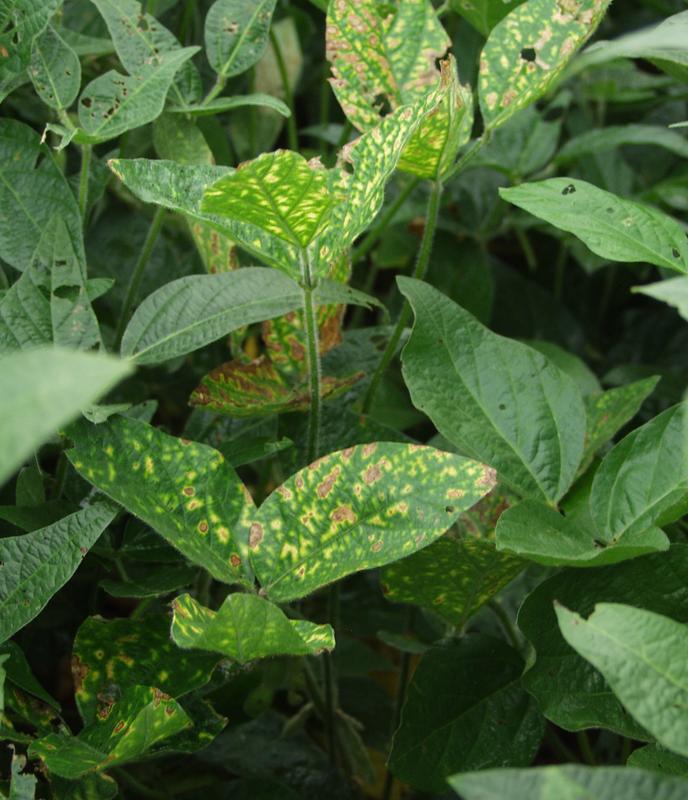A nematode and fungus team up to damage soybean

Canopy view of diseased and healthy soybean leaves. Photo: A.Westphal/Julius-Kühn-Institute
For years a disease complex of a plant-parasitic nematode and fungal pathogen has damaged soybean fields in the Midwest of the USA. Recently Dr. Andreas Westphal of the Julius-Kühn-Institute (JKI) and his American collaborator Dr. Lijuan Xing provided mathematical evidence for the synergistic nature of the interaction of Heterodera glycines and Fusarium virguliforme (Xing and Westphal, 2013, JPDP 120:209-217). Crop rotation offers no remedy against the teamed up pathogens. Now, the international author group quantified the specific role of the two pathogens in disease severity. This report was published on June 16th in the open-access journal PLOS ONE and is available online http://dx.plos.org/10.1371/
In collaboration with researchers from Australia, China and the US, microplot studies were conducted in Indiana. “The data were used to model the role of the fungal pathogen and the nematode quantitatively when causing the disease “, reports Westphal. This type of information enables us to predict the occurrence of sudden death syndrome and the severity of the disease.
“We gained insight how this important disease complex functions, while severely damaging the soybean-plants. In addition we developed new detection and quantification methods. These methods are critical for investigating and exploiting efficient management strategies of this still spreading disease“, summarizes Westphal.
Background information on the experiment design:
Tubes of 45-cm diameter were inserted perpendicular into the ground to provide the experimental context under field conditions. The plots were then infested with fungi and nematodes alone or in combination. Starting at the onset of disease, disease severity was monitored in the differently treated plots. The amount of the fungus at planting and in diseased plants was determined by a molecular quantification method called rtPCR using newly developed detection sets with specifically designed Primers.
The Australian collaborator conducted the extraction of DNA from large amounts of soil (500 g) using a method currently only available in his laboratory. The US group conducted the molecular detection of the fungus. Nematode population densities were determined by extracting and counting. A response matrix using the amounts of the pathogens as independents and the amount of disease as dependent were developed. In addition, such matrix was also used to describe the relation between the amounts of disease parameters and yield.
Author:
Dr. Andreas Westphal
Julius Kühn-Institut (JKI), Federal Research Centre for Cultivated Plants
Institute for Plant Protection in Field Crops and Grassland
Messeweg 11-12
D-38104 Braunschweig
Germany
E-Mail: andreas.westphal@jki.bund.de
Media Contact
More Information:
http://www.jki.bund.deAll latest news from the category: Agricultural and Forestry Science
Newest articles

A universal framework for spatial biology
SpatialData is a freely accessible tool to unify and integrate data from different omics technologies accounting for spatial information, which can provide holistic insights into health and disease. Biological processes…

How complex biological processes arise
A $20 million grant from the U.S. National Science Foundation (NSF) will support the establishment and operation of the National Synthesis Center for Emergence in the Molecular and Cellular Sciences (NCEMS) at…

Airborne single-photon lidar system achieves high-resolution 3D imaging
Compact, low-power system opens doors for photon-efficient drone and satellite-based environmental monitoring and mapping. Researchers have developed a compact and lightweight single-photon airborne lidar system that can acquire high-resolution 3D…





















